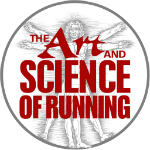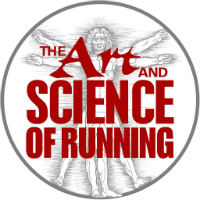In this episode of the Art and Science of Running Podcast we speak with runner, scientist, and journalist, Alex Hutchinson about the role the mind plays in endurance and performance. Alex blends his passions for science and writing in the Sweat Science column of Outside Magazine. Prior to writing for Outside, Alex studied physics at the University of Cambridge while competing and representing Canada as a long-distance runner.
After earning a PhD in physics and working on some post-doctoral research, Alex pivoted to journalism where he earned a National Magazine Award for his work with Popular Mechanics, covered adventure travel for The New York Times, and wrote a training column for Runner’s World.
Books
His latest book, ENDURE: Mind, Body, and the Curiously Elastic Limits of Human Performance, is not simply about about physics or physiology, but dedicates significant portions to the workings of the mind. Endure comes highly recommended by other experts in the realms of sport and science most notably David Epstein, Amby Burfoot, Tim Noakes, and Malcolm Gladwell.
Alex’s first book, Which Comes First, Cardio or Weights? Fitness Myths, Training Truths, and Other Surprising Discoveries from the Science of Exercise exemplifies the breadth of his writing about running.
PhD in Physics to Journalism
In our interview, Malc who was also formally trained as a physicist in the UK, asked Alex how he decided to transition from a career in physics to a career in journalism. In response, Alex shared some insight into why he chose to study physics in the first place based on the advice of a mentor:
“If you don’t know what you want to do, do something hard and it will train your mind. The problem solving skills will be transferrable to other domains. If you show that you can do something hard and challenge yourself it’s easier to do that than study basket weaving for four years and then decide to be a physicist.”
After four years of studying physics, Alex still didn’t know what to do so I went to grad school. After grad school he still didn’t know what to do so did a post doc. Then he had an “awakening moment.” After working in a lab for 14 hours a day a colleague came back and asked if I had read an article in the latest journal. He was reading physics for fun after working in physics all day for work. Alex was doing physics because it was hard, but it wasn’t what he wanted to do at the end of a long day working in the lab. He had other interests and felt that journalism might allow him to continue to learn and explore other aspects of life outside of the lab.
Alex did a one year master’s degree in journalism to show that he was serious, rather than simply jumping into an internship and assuming it would just come to him. While writing for the Ottawa Citizen, Alex learned that he does his best work when he writes about things that he really cares about.
Journalism gave Alex something to work towards – a column dedicated to running – whereas in the field of physics the only thing that came after studying physics was more physics. Journalism has a lot of career switchers and is open to those from other disciplines so the transition wasn’t entirely
Alex made the transition to journalism in 2004. He was in the best shape of his life and preparing for the 2004 Olympics, but suffered a sacral stress fracture so rather than trying to rehab and run off of less than optimal training, he moved on from the Olympic Trials and went to journalism school.
Shifting Priorities
Eventually, Alex returned to former mileage and intensities, but in the first chapter of his running career running always came first. In the second chapter of his running career (in early 30s), running came secondary to journalism. He was doing the same workload and workouts, but racing was not at the same level.
“At the time, it was very mystifying because I was still wondering what was different. I wanted to quantify it. . . . Maybe I should say that it’s not so surprising because the answers are all in my book. But when you’re in it, stepping outside it’s very interesting. Everyone goes through different stages in different ways. My racing performances changed when it took on a different level of importance (secondary to journalism).
It’s all in your head
Alex signed Jacob’s copy of Endure with the message, “It’s all in your head.” Jacob asked Alex to recount an experience that he shares in the book about a breakthrough that he made as a runner. Despite a very promising start to the sport, like most runners, Alex reached a performance plateau that he couldn’t break out of for four consecutive years of racing.
Alex ran 4:02 for the 1500m (roughly 4:17-4:18 for the mile) in his second year of running as a high schooler. After such a standout start to the sport, he naturally assumed that he would break 4:00 the next year. When he didn’t beat the time the first year, he assumed he would break 4:00 the following year, and then the following year.
After four consecutive years of running 4:01 or 4:02, Alex thought that perhaps he was running up against a mental and physical barrier. Until one day in a low-key indoor meet on a 200m track in Quebec, Alex heard a split of 27 seconds for the first 200m and 57 seconds for the first 400m. Those splits were way too fast based on his previous performances and goal for the race (32 seconds for 200m and 64 seconds for 400m is 4:00 pace for 1500m) but “aside from external feedback, there was the internal feedback that this doesn’t feel so bad. Let’s keep going!”
Alex ended up finishing in a time of 3:53.4 – a 9 second personal best after four years of running the same time. Upon further analysis of his splits and discussion with a teammate who recorded his splits, Alex realized that the time keeper was calling out the wrong splits and he actually hadn’t run quite so fast in the first lap. But somehow in his mind he had thrown caution to the wind and splits out the window and decided to just go for it.
He never had trouble breaking 4:00 again. The next time Alex raced the 1500m he ran 3:49 and then 3:44.
Connecting the findings from Endure with the masses
After nearly a decade of researching to ultimately write the book, Endure, Alex was trying to figure out how to connect readers to his research. He had to ask himself, How do I make people care? Why do I care? Why do I find it interesting? He felt that his own personal experience of breaking a mental and physical barrier in such dramatic fashion would be a perfect way of introducing the topics that he would later discuss in the book. We couldn’t agree more. If you haven’t read the book yet, we encourage you to do so!
Change in Expectations
Malc recalls a similar experience when he was representing Great Britain at a World Cup climbing competition in 2011. Just minutes before he was to compete, he fell during a warm up. The fall shook him up so much that he completely let go of all expectations. He surprised himself by placing third and performing better than he ever had before.
Coaching with Foucault: Social Theory, Time, Space, and Running
Discussion of recent Outside article about applying Foucault Social Theory to coaching.
In a surprising turn of events, two physicists and an anthropologist who planned to dedicate significant time to the discussion of shoes and recent decimation of world records at road running distances from 10K to the marathon, ended up talking about the application of French Social Theory to the practice of coaching. What started as a bit of a comical piece, ended up providing significant insight into the arta nd science of coaching with even greater implications for coaching remotely which is something that Malc and Jacob both do.
Alex had heard of some studies about the application of social theories by Michel Foucault to the coaching of distance runners and began to read and write about it. Along the way, he noted how the application of such theories may or may not have helped him as a runner with some of his coaches and mentors and how these practices might be applied to coach / athlete relationships today.
Foucault focused on the organization of time and space and how different arrangements can be used to either control or liberate an individual. Much of this has to do with the ability to see the behaviour of those under control. We discuss some of the things that coaches and athletes can do to empower the athlete and the coach by varying the arrangements of time and space.
Progress or Mechanical Doping?
We couldn’t have Alex on the show without discussing the controversial topic of the significant performance gains being attributed to new shoe technology, specifically Nike’s various Vaporfly models. The New York times recently updated some studies with more findings that claim that the relatively new shoes that contain a curved carbon fibre plate and pebax foam are helping even some of the world’s best to shave minutes off of their already blazing times.
What does Alex think of it all? Listen to episode 14 of the Art and Science of Running Podcast to find out.
Sponsors, shoutouts, and social media
This episode is brought to you by the Peak Run Performance Rocky Mountain Running Retreat April 30-May 3, 2020 in Canmore, Alberta, Canada. Use discount code ASR10 for 10% off when you register.
Intro and outro music GOIN 4 A WALK by Dallin Puzey.
Please listen, subscribe, rate, and review this podcast on Apple Podcasts, Spotify, Stitcher, YouTube, or wherever you listen to podcasts.
Please follow us on Twitter, Instagram, and Facebook and let us know what you’d like us to discuss in future episodes.
Podcast: Play in new window | Download
Subscribe: Google Podcasts | RSS




